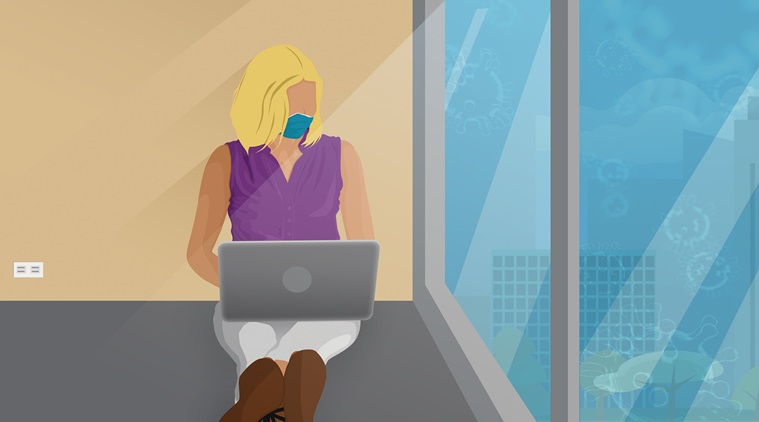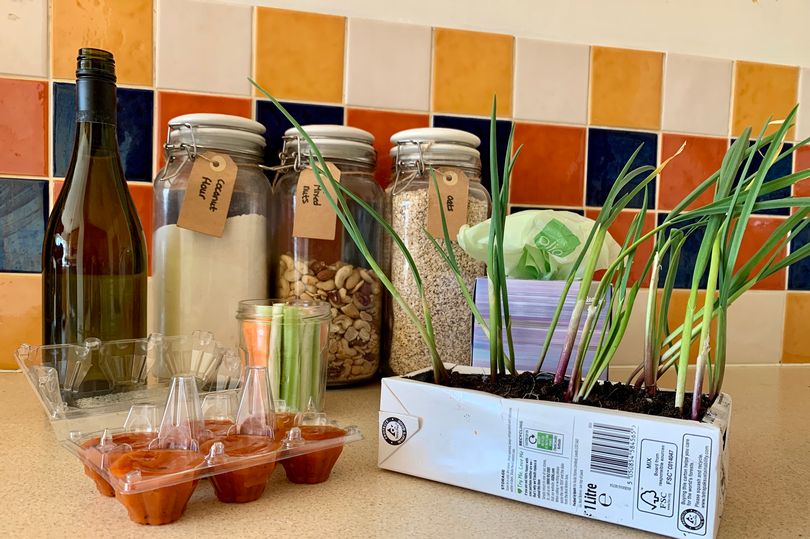The latest on all kinds of information, news, and resources that help you make working remotely better.

A major new global study into remote working, conducted by Paper Giant for Atlassian, found that 40% of respondents felt that working from home translated to significantly longer hours.
The good news is that it doesn’t have to be this way. As we move away from traditional office spaces, there are a number of hacks and tricks you can deploy to boost your own productivity. The goal? To hit all of your targets without impinging on your wellness or work-life balance whatsoever. Read on for our nine science-backed, expert-approved principles of self-productivity.
1. Master desk-scaping
First, try “zoning” your home office, by creating separate spaces for reference materials, supplies, and long-term projects, before assigning discard dates to as many as possible. Then clear your desk itself and only replace items that are essential for daily use.
Finally, add pops of color wherever you can – from a picture on the wall, to a screensaver or even your choice of mug. Color can have a major impact on mood, with greens and blues particularly proven to increase productivity, so reach for that ocean vista or add a leafy plant to the proceedings.
2. Embrace mono-tasking
The brutal truth is that very, very few of us can efficiently multi-task. In fact, it’s roughly 2% of the population, according to Professor David Strayer of the University of Utah, an expert in cognitive distraction. The problem is that when we bounce from task to task, we aren’t actually getting more done. Instead, we’re forcing our brains to constantly switch speeds, steering through tasks more erratically and burning out our internal gearboxes. The answer is to slay the multi-tasking monster, and embrace mono-tasking.
3. Plan tomorrow, tonight
The Paper Giant study discovered that 44% of workers believe it’s now more important to know how to motivate themselves apart from the parameters of office life. One of the best ways to do that is with a to-do list – and the best time to make that list is the night before.
4. Make a not-to-do list
You’ve made your to-do list now, but if you want to be truly productive, you’ll need the opposite, too. A not-to-do list should be a permanent addition to your workspace, featuring all of the time-wasters that are obstructing your daily goals – from checking social media, to clicking on cat videos, to wandering into the kitchen to wash the dishes.
5. Block out your flow times
Your “flow” time is when you’re most efficient: a period of hyper-focus when you work most smoothly. For some people it’s early in the morning, for others it’s the afternoons or evenings. Once you’ve identified yours, block out 90 minutes in that window each day for pure, deep work on your biggest tasks.
6. Prioritise Pareto and Pomodoros
Named after Italian economist Vilfredo Pareto, the Pareto Principle (also known as the 80-20 Rule) states that 80% of your results come from 20% of your actions, and vice versa. In other words, to become more productive, you must identify the 20% of your work that is having that 80% impact, and always prioritise it.
Next, you should maximise your minutes spent working on this crucial 20% via the Pomodoro Technique – a series of 25 minute focused “sprints” on a task, followed by a complete five minute break each time.
7. Learn to nap like a pro
The secret is to harness your body’s natural circadian rhythm and employ a 20 minute power nap (sometimes called a Stage 2 Nap) in the mid-afternoon, to boost your memory, cognitive skills, and creativity.
By restricting yourself to just 20 minutes, you reap the aforementioned benefits without falling into deeper REM sleep, which will leave you feeling groggy and disoriented. To maximize your energy, drink a cup of coffee immediately before your power nap. Researchers have found that caffeine takes about 20 minutes to show its physiological effect, so it will kick in just as you’re waking.
8. Dress for success
When you’re working from home, it doesn’t really matter how you dress – or even if you dress at all below the waist. But not making a sartorial effort is a major mistake when it comes to your productivity levels. The act of preparing for the day ahead, including the selection of slightly smarter clothes, sends a message to your brain that it’s game time – and that sparks more mental energy.
9. Set up a “force quit” to your work day
“Overworking can lead to stress and burnout, harming not only your productivity but also your overall mental health and wellbeing,” says Graham. “Instead, set a firm time to bring your work day to a close and stick to it at all costs.” If you struggle with this, find an accountability partner – a colleague, friend or manager – and set up a call to officially end the day. A hard finish not only means a softer start to the following morning after a good rest, it also means you’ll work faster and more efficiently each day, knowing that your finish time is non-negotiable.
Put these tips to work right now
Want to get the most out of the advice in this article? Pick two tips and implement them right now.
And then, if it happens to be the end of the day where you are, call it a night and start fresh in the morning. Tip #9 makes good sense, right?

Things will have to be a little different this year due to the ongoing disruption caused by the coronavirus pandemic. While the easiest, and cheapest, option for employers is to not go ahead with their annual festive plans, in the spirit of keeping Christmas alive some may choose to organize a remote party.
Some important things that employers should be aware of.
- Even with something that can be considered a ‘treat’ for employees, people who are working carers, have been struggling with work-related stresses, may not want to partake in a Christmas party this year, however well-intentioned it may be on the employer’s part. It is therefore advisable that remote parties should be optional and not constrained to a certain timeframe in which staff must be in attendance.
- Employers should ensure that those in attendance do not feel excluded from any activities during the party. For example, if an employee does not drink alcohol and a virtual wine tasting activity makes up the bulk of the event, such a person would not be able to contribute to the fun and may therefore feel left out.
- When attendees and potential attendees, have been established and the activities have been finalized, it is in the best interest of the company to send out emails to them. It should detail what is expected of them at the event and highlight that the same conduct is expected of them at a remote party as it would be at an in-person event.
- Similarly, employees should be made aware that the same grievance produce applies – to ensure that if company rules are broken by an employee or a grievance with the company itself, the affected employee will be able to raise this with the company.
- Finally, while employees can use their social media accounts in their own personal time, including at work social gatherings, employers must ensure that the use of social media should be done in a manner that does not adversely affect the company’s reputation.
Remote parties are the perfect way to ensure that social distancing rules are adhered to and that employees are rewarded for their efforts, there should be a mutual sense of responsibility on the part of the company and its employees.
Remote work and self-care: The place you work and live | Sima Baldisserri, Iamexpat.nl

How can you manage to work remotely while creating the healthiest environment for your physical, mental, and emotional well-being? Here are a few self-care tips that may help to create your flexible workspace:
Your office at home
Create a space that is as separate from the rest of the house as possible.
No matter how small your living space is, do not work everywhere, because this will make you work beyond work hours. Instead, you want to maintain a distinct mental separation of your home and associate each room or corner of your living place with its own function.
Brighten your day
Choose a corner in a well-lit room and if you could place your desk near a window that would be perfect!
Having a well-illuminated office/desk by natural light produces several positive effects on your well-being: better quality and duration of sleep, greater predisposition to physical activity, prevent eyestrain and, in general, increased quality of life.
Life is in the air
Increase ventilation by opening doors and windows at least three times a day for 10-15 minutes. This is also the best practice to protect from viruses and bacteria. Living in a healthier and more comfortable environment improves mood and quality of life and reduces the risk of complaints, such as headaches, eyestrain, and feeling of tiredness or drop in concentration.
Declutter your workspace as often as possible
It is much better to manage the little space you have effectively as a home and office than to completely turn your whole living space into an office, a clean and clear workspace can reduce your stress, help you focus, and also keep work from interfering with your home/personal life.
Sense of smell
When working remotely, some of the most common complaints are decreased attention and performance, as well as mood swings, which often have an effect on the quality of sleep. The ability to smell comes from the olfactory sensory neurons, these cells connect directly to the brain. This is a reason why essential oils can be a very valid help: it is sufficient to have a diffuser where you add from 5 to 7 drops of chosen essence.
A better work-life balance
These self-care tips for remote working can apply to anyone looking for better ways to manage their lives, time and have a better work-life balance. Your home and workspace is an extension of your energy field, by taking care of it, you are a step further away from physical and mental complaints, and a step closer to your well-being, and when you feel good, your relationships and work benefit from it.
6 Best Employee Appreciation Ideas your Staff will Love | Sofia Peterson, Thehackpost.com

If a company wants to grow, it must ensure that its employees are working efficiently as well as effectively.
But how can you manage the work of your employees? How can you know if they are dedicated or not? These questions can be answered by providing employee motivation or employee awards. These are some ways in which you can show your staff that you care –
1.The employee of the month.
If you start selecting an employee of the month based on employees to work performance and give them any hike in salary or prize for this, the employees will work harder due to increased competition and desire to win.
2. Certificates of appreciation
If you provide every employee with certificates whenever they perform a task marvelously, their pride will increase, and they will feel motivated to perform more such tasks as everyone wants pride, self-esteem, and respect.
3. Company journals or magazines
Whenever any employee performs an exceptional task, you can mention his name in the company’s journals or magazines. This will make him feel attached to the work, and their pride will be enhanced. Nothing is the biggest motivator than self-esteem.
4. Small get together or celebrations
Many times employees have to make lots of efforts for a particular task which makes them feel that the work is tedious and their efficiency reduces. To avoid such situation, you can organize small get-togethers or small celebrations after every radius task. It will ignite the fire of motivation in employees.
5. Monetary incentives.
Suppose an employee has become the reason for earning unrealistic profits, you can give him a share in profits. Similarly, if employees are working on festivals or doing night shifts for meeting the deadline, you can provide them with a bonus.
6. Performance-based pay.
Suppose there are workers in a manufacturing unit, you can give them pay according to their performance. For example, if a worker makes eight units, he will get 50 rupees per day, but if a worker makes 12 units per day, he will get 70 rupees per day. It will motivate workers to work more so that they can earn more.
Financial incentives can be bonuses, free transport, gifts, etc., while non-monetary ones include more respect, pride, and recognition in the company. Once employees start to feel themselves to be a part of the company, they will work in a much better way. Just motivate your employees and make your company touch the sky.







